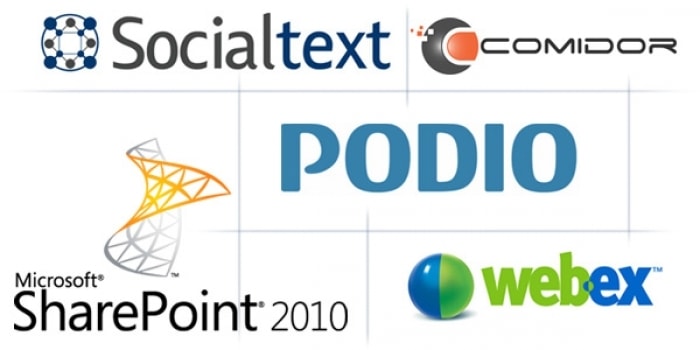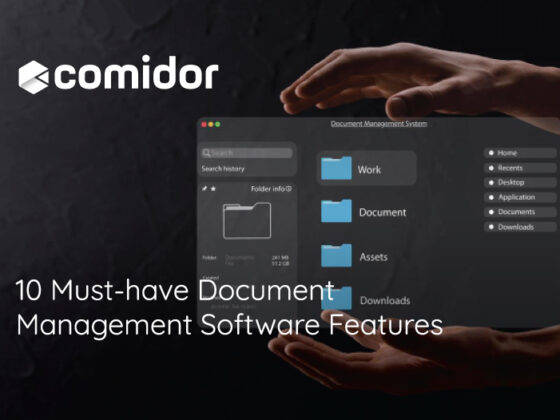With the advent of cloud Collaboration services, organizations are finally endowed with the much wanted agility, while employees can seamlessly exchange information and track knowledge among themselves but also with their customers and partners. As numerous market predictions[1][2][3] shoot true, we can expect global collaboration services market to continue its upward trend with a compound annual growth rate (CAGR) of 8% through 2018.
It is anticipated that 2014 will be the “point of no return” year where most of the collaboration enabling technologies along with their associate models will be unconditionally adopted by Enterprises of any size. Major established SaaS vendors are already harvesting the benefits of this vast and yet unexplored market, and are building their arsenal for the upcoming all out war with the new comers in the collaboration services arena.
Vendors are moving towards the social workflow management trend, encompassing the traditional social and file sharing toolsets into one common platform. This focus enable the deployment of classical real-time collaboration tools into use cases far beyond the strict collaboration realm, such as project management,CRM, customer communication and monitoring etc.
Below we present the most indicative collaboration market state of the art solutions:
1. SharePoint 2010:
Pros: SharePoint 2010 is primarily an ECM suite with strong collaboration features. It is the natural choice for Micorsoft customers, as it offers seamless integration with other Microsoft solutions. SharePoint gives enough scalability through third-party applications, and freedom on deployment options including on-premise and SaaS options.
Cons: SharePoint Foundations is free but with limited functionality forcing enterprises to opt for SharePoint Server.
Pros: Enterprises grasp the benefits of IBM Connections’ modular architecture to select the most appropriate collaboration modules for their needs. Strong embedded recommendation engine for knowledge items streaming and tracking, coupled with idea management system.
Cons: Collaboration features are not at the state of the art level, lacking content tagging system, and basic mobile offerings.
Pros: WebEx Social fully supports BYOD through HTML5 and dedicated customized applications. Its powerful tagging and sharing engine allows the creation, sharing tagging and tracking of single instances of content across employees.
Cons: Lack of social workflow and task management capabilities
4. OpenText:
Pros: Strong content management, versioning control and analytics on usage rates. Seamless integration with SharePoint and OpenText ECM.
Cons: True and advanced real-time collaboration is only achieved through integration with third-party solutions. Task management and social workflow management are currently not supported.
5. StreamWork:
Pros: Probably the king in social workflow management coupled with project management and analytics capabilities, StreamWork provides the necessary bridges for integration with the well known third party apps like Google Docs, SharePoint, WebEx etc. It offers strong capabilities for page customization and a plethora of APIs available to developers for legacy systems integration.
Cons: No live audio/video capabilities.
Pros: With its ability to form groups with externals (customers, partners, providers etc.) it is the primary choice for enterprises focused on customer tracking and monitoring. Mobile capabilities and activity streaming is above the state of the art while integrates well with SharePoint.
Cons: Content management and real-time communication (audio/video) capabilities are primitive.
7. Socialtext:
Pros: Above the state of the art collaboration capabilities focused on knowledge networks creation and social tagging. It provides excellent integration with SharePoint and a variety of cloud deployment options.
Cons: Basic to primitive content management and real-time collaboration capabilities.
8. Podio:
Pros: Podio provides an e-mail centric notification engine handling all collaboration tasks. Basic task and workflow management are available along with an interface for creating/modifying apps that can be added to the Podio home screen for iPhone.
Cons: Limited real-time communication and file searching. No integration with SharePoint.
9. Comidor:
Pros: Comidor is a cloud application suite that combines Collaboration, Project Management, CRM, Business Intelligence and Document Management functionalities all in one platform. It is based on the Enterprises’ organizational structure, such as Departments, Groups, Teams etc., and employs various Social Network tools to achieve fast and easy task management and information sharing and tracking. It also provides tools and functionalities to keep track of productivity.
Cons: Due to its plethora of tools and functionalities cannot be considered purely as a collaboration platform. Comidor is ideal for SMEs in need of an integrated cloud suite covering most of their daily business needs.
Sources
[1] The Forrester Wave™: Cloud Strategies Of Online Collaboration Software Vendors, Q3 2012
[2] Forester Consulting: Collaboration Services: Deployment Options For The Enterprise
[3] Accenture: From Talking to Transforming: Getting Real Value from Enterprise Collaboration Technology





